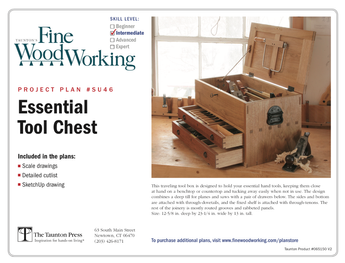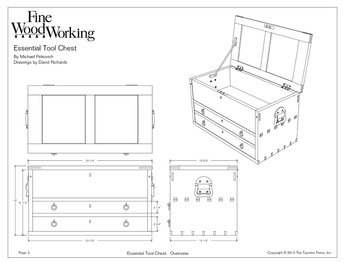A while back I read an excellent article by a craftsman specializing in built-ins. He made the point, and illustrated it beautifully, that designing in reveals at every opportunity resulted in both a more interesting finished product and easier joinery.
I can’t find the article anywhere and I want to share it with my son.
Does this ring a bell with anyone?
Mike D














Replies
No, I don't know the article. But the reveal seems to me the modern way of hiding the inaccuracy of flush joints. As a teacher told me, the eye can pick up a 1/64" variance between surfaces, but can't see that difference if the surfaces are separated by say 1/8 of an inch or greater. So separations and offsetting is a way of not requiring perfection.
Which explains why in days of yore when casing doors, fatter plinth blocks and corner blocks were used. It allows surfaces to not be perfectly aligned, hiding the misalignment in an offset. On old door frames where the jamb casing abuts the head casing a thin project strip (bead) often runs between the head and jamb again hiding the unevenness of the wall surfaces. When I was young, I used to think they added those strips to be fancy. Then I understood they did it to make the job easier.
So whether you use an indent or a bump out, the result is the same. And they do add interest too.
Peter
They do add interest. I'm pretty sure that if I ever get around to making those floor to ceiling bookshelves that I have planned for the office, I'll find the book or magazine with the article I remember.
But once I've moved the stack two or three times, just where the book or article is, is a mystery. Someday I'll get organized.
Mike D
In my shop we use reveals for two situations, neither of which is because we can't work precisely.1. Large units that are made up in sections, prefinished, and assembled on site will meet with a reveal, not flush. 2. On painted pieces, any joint that will over time crack its painted finish will be done with a small reveal to diminish that crack. It's just an unavoidable fact of finishing that opaque finishes show cracks along certain joints even if the joints were done with all the precision in the world.We've also done extensive cabinet work using reveals as door pulls and design elements to expose different materials, transitions, etc. Like Krenov said, "it's not my cup of tea, but it's good tea."David Ring
http://www.touchwood.co.il/?lang=e&id=1
It's not just days of yore, nor just woodwork - when designing things to be made of injection mouldings for example one has to include a 'designers gap' for just the same reasons. Plastic shrinks slightly as it cools in the mould - and after ejection of course- and it is difficult to predict the exact amount. So you design those little detail gaplines and the minor variation is unnoticeable.
This forum post is now archived. Commenting has been disabled